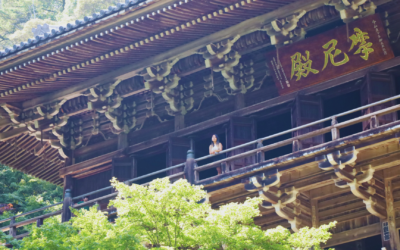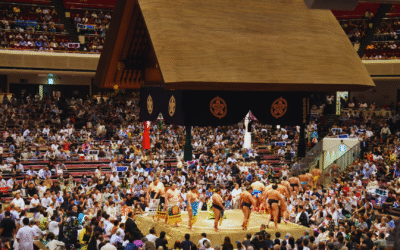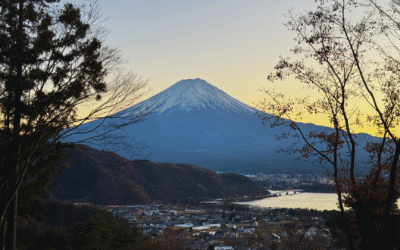As a travel agency based here in Japan, we get a front-row seat to all the little things that blow visitors’ minds — and it’s honestly one of our favourite parts of the job.
No matter how much Japan trip planning people do before coming, there are always a few “wait… what?” moments once they arrive. Japan is packed with quirky rules, ultra-specific etiquette, and delightful contradictions that you just don’t find anywhere else.
So, based on years of guest feedback, here are 28 surprising things that regularly catch travellers off guard — from the genius to the downright baffling.
1. Scarcity of Public Bins

This one catches people off guard every single time. Japan is unbelievably clean — like, cleaner than most cities with bins on every corner — but the weird thing is, public rubbish bins are few and far between. You’ll find yourself holding onto your trash way longer than expected.
So where do you chuck your rubbish? Your best bets are train stations (often near ticket gates or on platforms), parks, and food courts. Convenience stores, known as “konbini,” sometimes have bins, but they’re typically intended for customers and may be located inside the store rather than outside. It’s considered good manners to make a purchase before using these bins.
Additionally, vending machines often have bins nearby, but these are usually designated for bottles and cans only. Given the limited availability, it’s a good idea to carry a small rubbish bag or ziplock in your day bag. You’ll thank yourself after eating a konbini snack on the go with nowhere to toss the wrapper.
2. Cash Is Still King
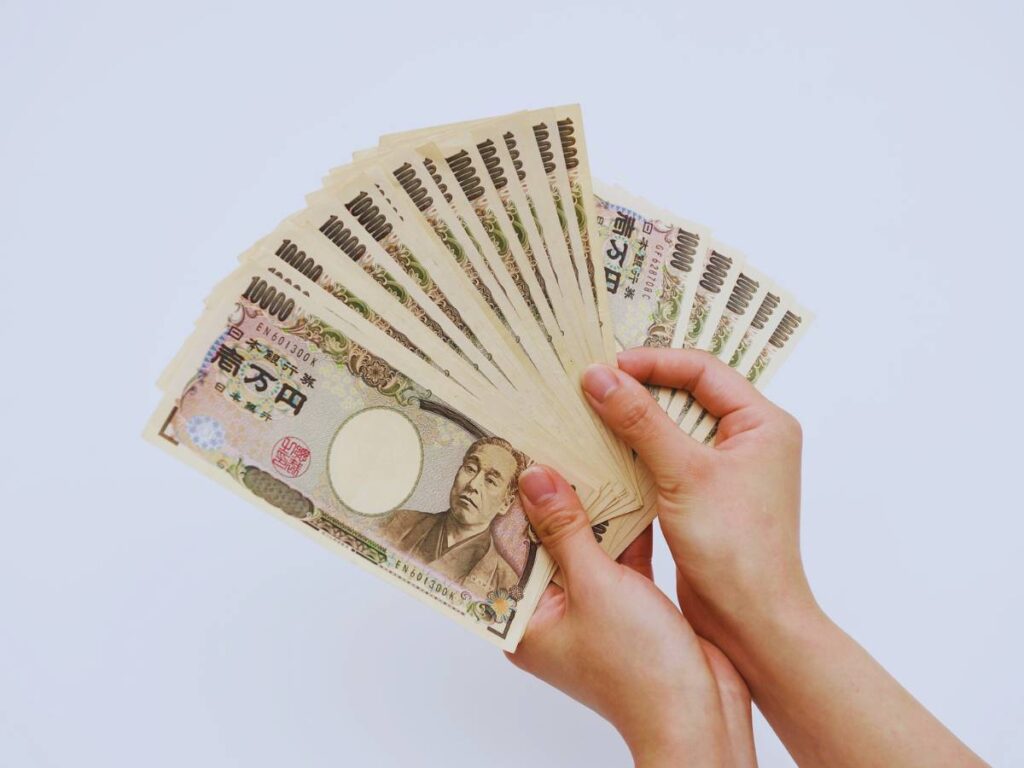
For a country with vending machines that talk to you, Japan is weirdly into cash. You’ll find loads of spots — ramen joints, little shrines, market stalls — that straight-up don’t accept cards. Even some taxis and hotels outside the big cities prefer yen in hand.
So yeah, always carry cash. And not just big bills — small change is super useful. Hit up 7-Eleven or post office ATMs, as they’re the most reliable for foreign cards. And don’t assume you can tap your card or use Apple Pay everywhere, because you definitely can’t. When in doubt, have a wad of yen ready.
3. Limited English

If you’re sticking to Tokyo or Kyoto, you’ll probably get by fine with English signs. But once you start exploring smaller towns, countryside spots, or even just neighbourhood izakayas, English starts disappearing fast. That includes menus, street signs, and even transport info.
Even in Tokyo — one of the biggest cities in the world — don’t be surprised if most people don’t speak much English, or are too shy to try. It’s not that they don’t know any; a lot of people are just perfectionists and don’t want to mess up. That said, locals are usually super sweet and will often go out of their way to help, even if it turns into a full game of charades.
Best move? Download Google Translate and use the camera function — it works surprisingly well for signs and menus. Also, take screenshots of directions in advance if you’re going somewhere off-grid.
4. Quiet Public Transport

If you’re used to loud trains back home — music blaring, phones ringing, people yelling — Japan will feel like another planet. Public transport here is silent. People don’t take phone calls, talk loudly, or make any kind of fuss. It’s basically an unspoken “shhh” zone.
As a tourist, it’s cool to experience but also easy to accidentally mess up. Keep your phone on silent (called “manner mode” in Japan, BTW!), use headphones, and try to keep convos with your travel buddy to a low murmur. It’s not about being strict — it’s just the vibe, and once you get used to it, it’s kinda amazing.
5. Next-Level Toilets
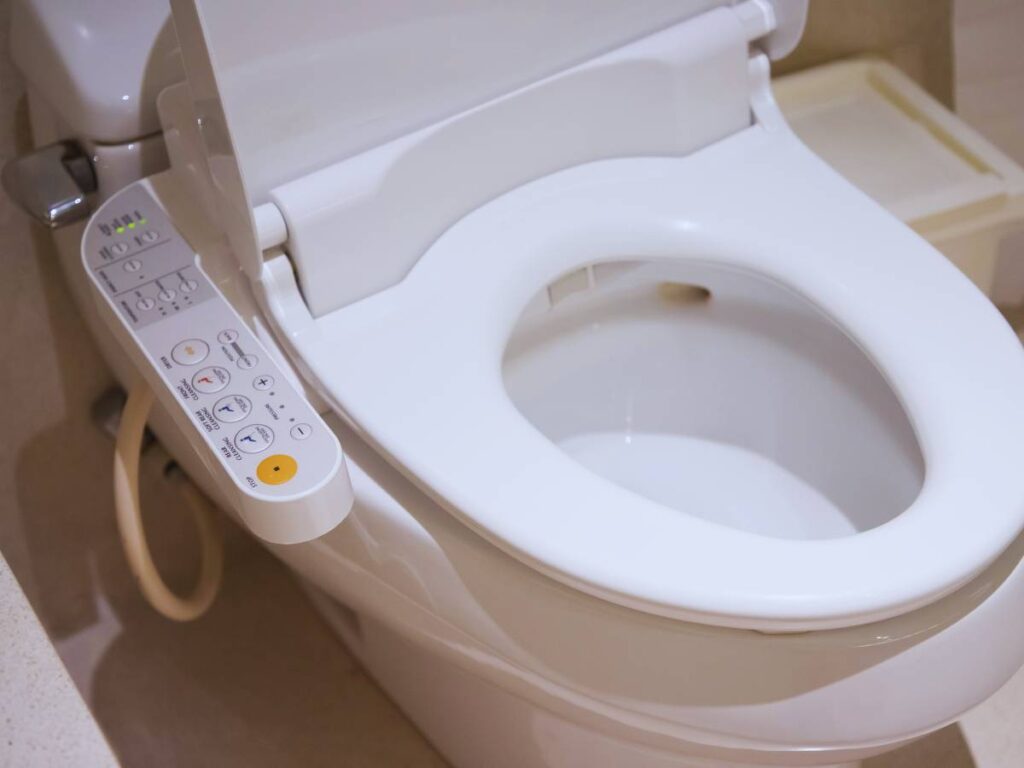
Japan’s toilets deserve their own fan club. Heated seats? Built-in bidet? Buttons that play waterfall sounds so no one hears you pee? Yes please. Even the loos in convenience stores are high-tech wonders.
But here’s the twist — a lot of public toilets don’t have soap, paper towels, or hand dryers. So it’s super normal for locals to carry their own hand sanitiser and a small towel. Also, don’t be shocked if you come across a squat toilet in an older spot — they still exist! It’s all part of the adventure, and honestly, the toilets are still cleaner than most you’ll find anywhere else.
6. Shoe Etiquette Everywhere
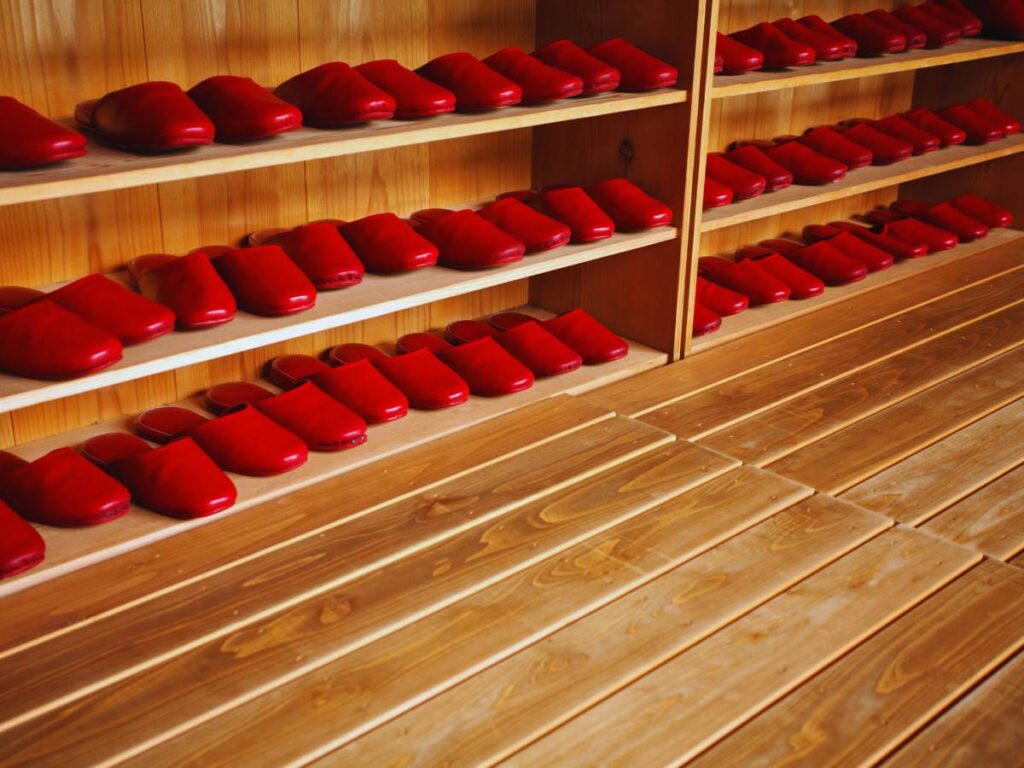
If there’s one rule that really sticks with travellers, it’s this: take your shoes off. And not just in people’s homes. You’ll be swapping your shoes for slippers in certain restaurants, traditional inns (ryokans), temples, historical buildings, and even in some changing rooms.
There’s usually a little step or raised platform at the entrance where you’re expected to leave your shoes. Often, slippers will be provided — and yes, there’s sometimes even a second pair of slippers just for the toilet.
If that happens, just go with it (but remember to switch back — walking around in toilet slippers is a no-no). Wearing easy-to-slip-off shoes makes life a whole lot easier, especially if you’re visiting multiple places in a day.
7. Strict Smoking Rules
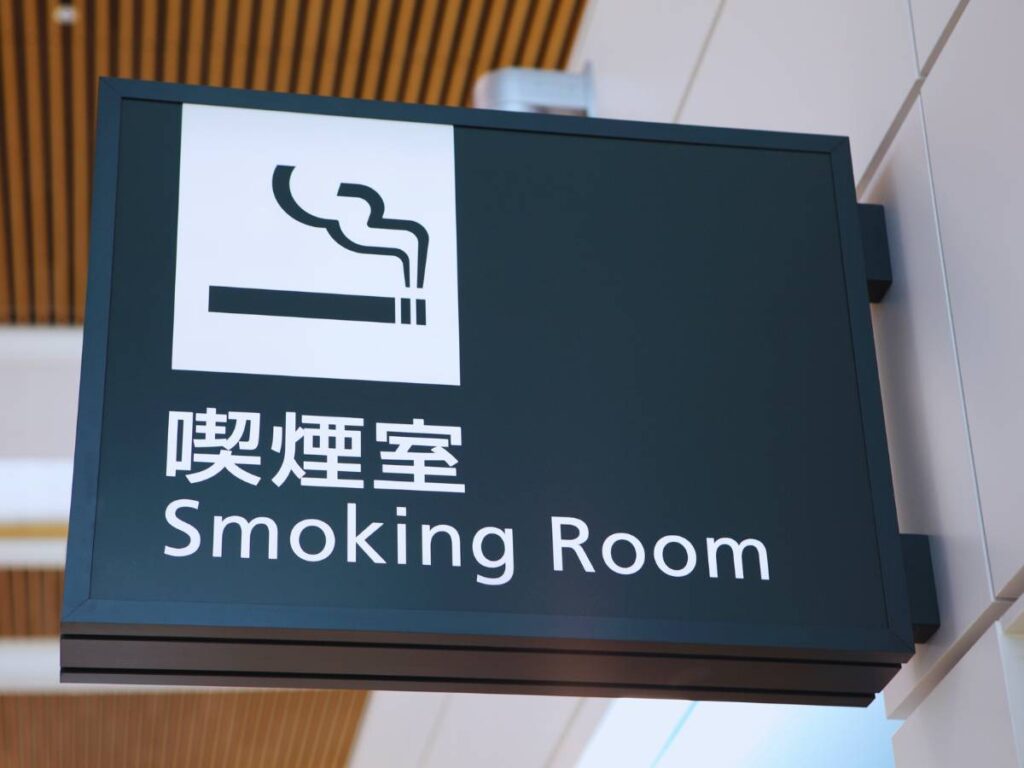
Lighting up on the go? Not in Japan. Street smoking is often banned, especially in cities, and you’ll only be allowed to smoke in clearly marked designated smoking areas. These are usually enclosed and tucked away near stations or buildings, and can be tricky to find at first.
Weirdly, some older bars and small restaurants still allow indoor smoking, especially if they’re exempt under local rules — usually if they’re under a certain size or don’t serve food. So if you’re sensitive to smoke or just not a fan of the smell clinging to your clothes, it’s definitely worth peeking inside (or giving it a sniff) before committing to a seat. You might walk into what looks like a cosy little spot and find it’s basically a smoke cloud with chairs.
And if you’re a smoker, keep an eye out for “smoking space” signs and don’t assume it’s okay to puff away in public — even outdoor smoking is a no-go in lots of busy areas unless you’re in a designated zone.
8. No Tipping

This one blows travellers’ minds in the best way. You don’t need to tip anywhere in Japan — not at restaurants, not in taxis, not even in fancy hotels. In fact, if you try, you’ll likely confuse the staff or have your money politely handed back.
Service here is just part of the job — it’s not something you’re expected to reward separately. It might feel weird at first, especially coming from places where tipping is the norm, but trust us: paying the bill is all you need to do. Simple, clean, and no awkward maths at the end of the meal.
9. Nudity at Onsen
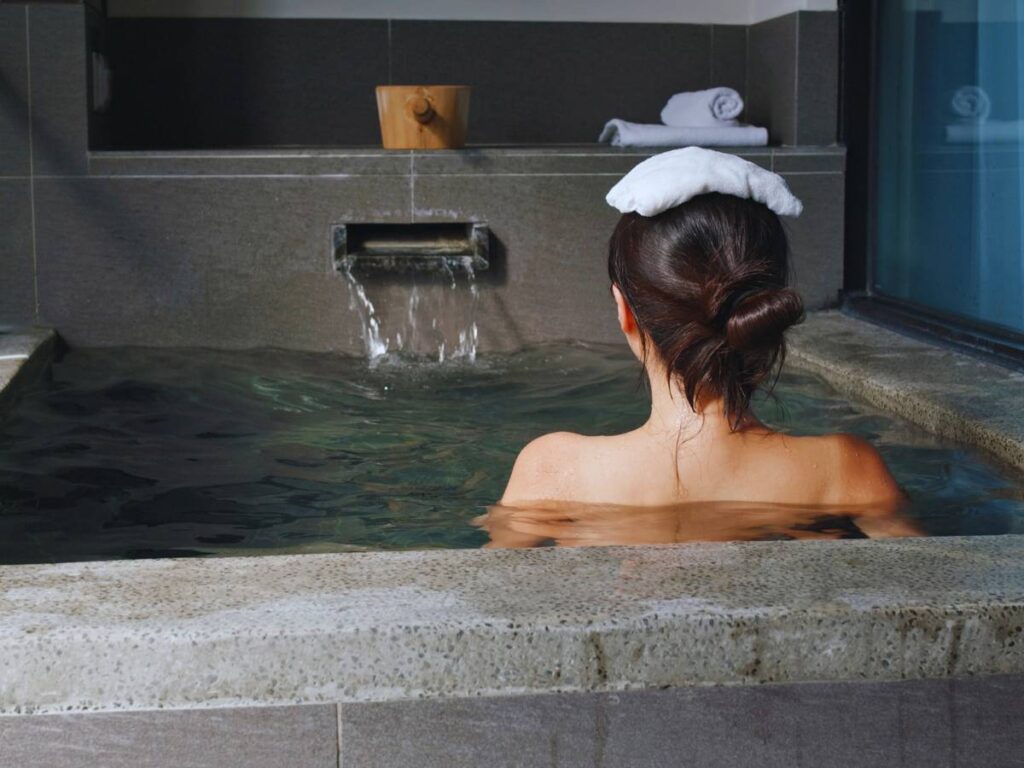
Yep, this one gets everyone. At Japanese hot springs — called onsen — you’re expected to bathe completely naked. No swimsuits, no covering up with towels, no trying to sneak in wearing shorts. It’s just how it’s done here, and for a lot of travellers, that first time can be a bit of a “wait, seriously?” moment.
The good news? It’s totally normal in Japan, and once you get past the initial awkwardness, it’s honestly no big deal. Onsens are gender-separated, and no one’s staring at anyone else. People are there to relax, not to judge.
That said, there are some mixed-gender onsens out there too (called konyoku), though they’re less common these days — and they often provide modesty towels or special bathing wear to make things a bit more comfortable.
That said, there are a bunch of other unspoken rules you should know — like where to put your towel, how to wash before getting in, and what not to do once you’re in the bath. We break it all down in this guide so you can go in fully prepped (and way less panicked): Onsen 101.
10. Tattoos Can Be a Problem
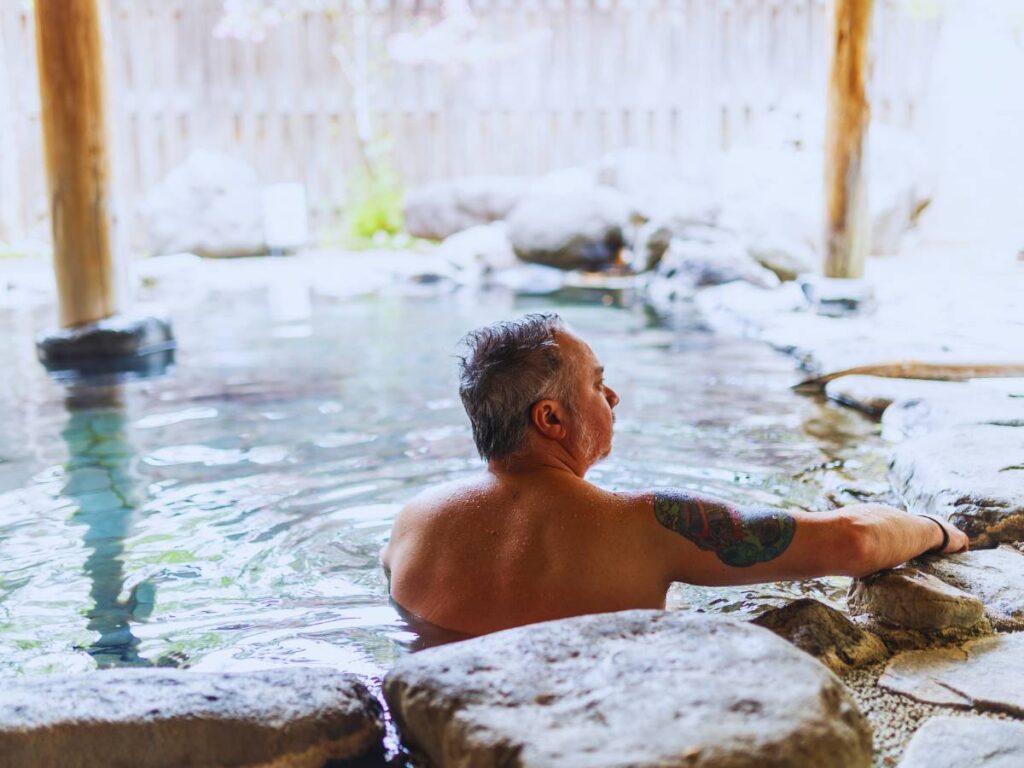
Tattoos are becoming more common in Japan, especially among younger people, but in traditional settings like onsens or public baths, they’re still seen as taboo. This mostly goes back to their association with the yakuza (Japanese organised crime), so places will often have signs saying “no tattoos allowed.”
If you’ve got ink, don’t panic. Some onsens are tattoo-friendly (especially in bigger cities), and more are becoming open to tourists. Another option is to use tattoo cover-up stickers, which you can find online or sometimes even at the onsen itself. Or look into booking a private bath — that way, you can enjoy the experience stress-free, no matter what’s on your skin.
11. Public Seating is Rare
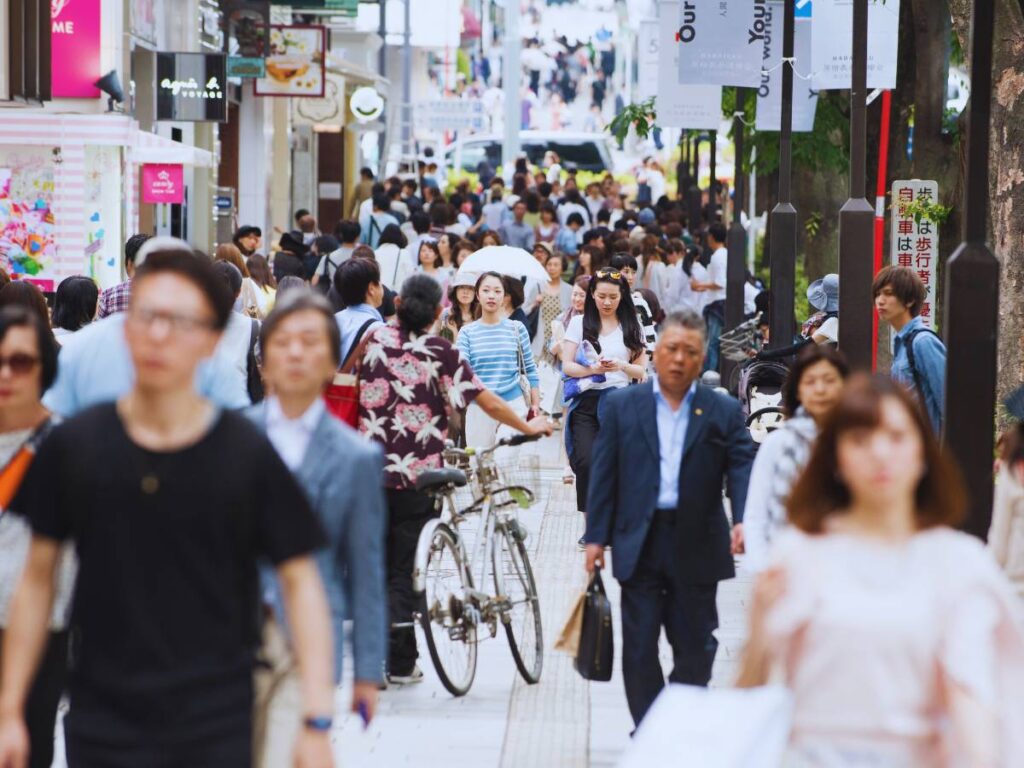
Think you’ll just plop down on a bench and take in the view? Not so fast. Public seating in Japan is surprisingly rare — especially in busy areas like shopping streets, station plazas, or sightseeing spots. You’ll be walking around all day before you find somewhere to rest your feet.
Parks usually have benches, and some train stations have seats on the platforms, but in general, don’t count on having a place to sit unless you’re in a cafe, restaurant, or an actual waiting area. If you’re grabbing food from a konbini, look for stores with eat-in spaces — not all have them, but some do. Otherwise, park steps or low walls often become the unofficial go-to.
One big no-no though? Sitting on Torii gates — the traditional archways at shrine entrances. They’re sacred, and treating them like a bench is a major faux pas. Best to admire from a respectful distance and save the sit-down for literally anywhere else.
12. Limited Breakfast Options
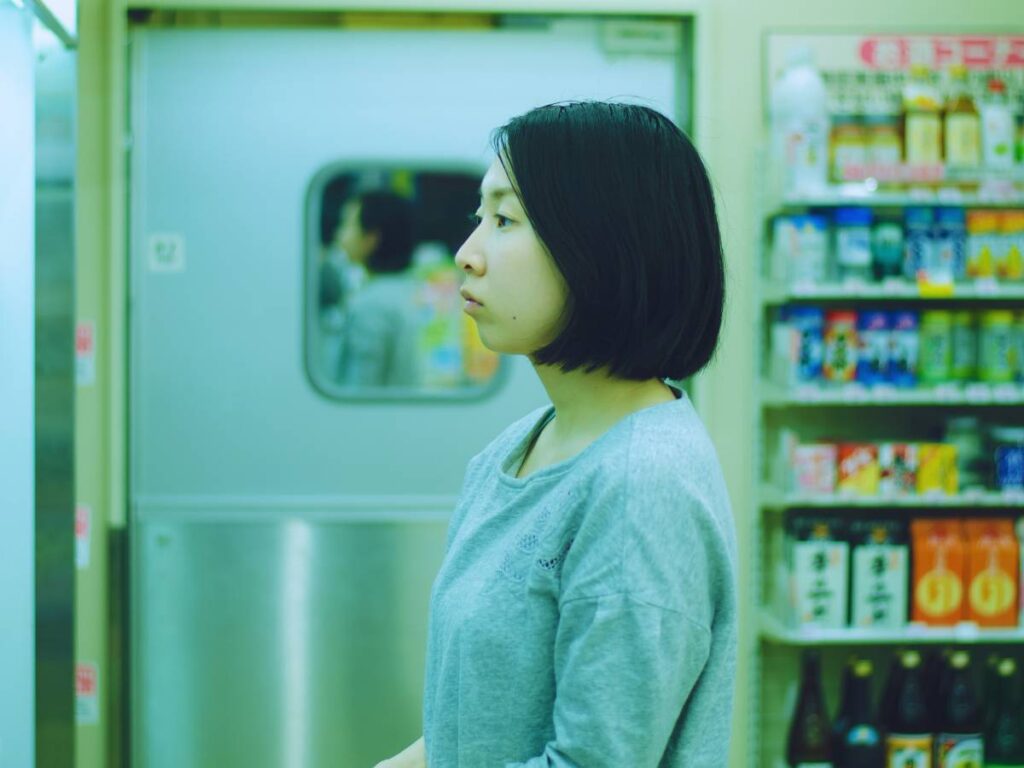
Planning to start your day with a nice early breakfast at a local cafe? You might be out of luck. A lot of restaurants and coffee shops in Japan don’t open until 10 or 11am — even in big cities like Tokyo or Osaka. If you’re used to early morning brunch culture, this one can catch you off guard.
But don’t worry — convenience stores (konbini) totally save the day. 7-Eleven, FamilyMart and Lawson are open 24/7 and stock everything from onigiri (rice balls) and sandwiches to hot food, yoghurt and surprisingly good coffee.
If you’re after a sit-down option, big chains like DOUTOR or Tully’s usually open earlier and are a safe bet for a quick coffee-and-toast type of start.
Also, keep an eye out for 喫茶店 (kissaten) — traditional Japanese cafes with a retro, Showa-era vibe. These spots often open earlier and offer classic breakfast sets with toast, eggs, and coffee in a cosy, old-school setting. It’s a more low-key, local way to ease into your day — and a totally underrated experience if you’re into vintage Japan charm.
13. Vertical Layouts
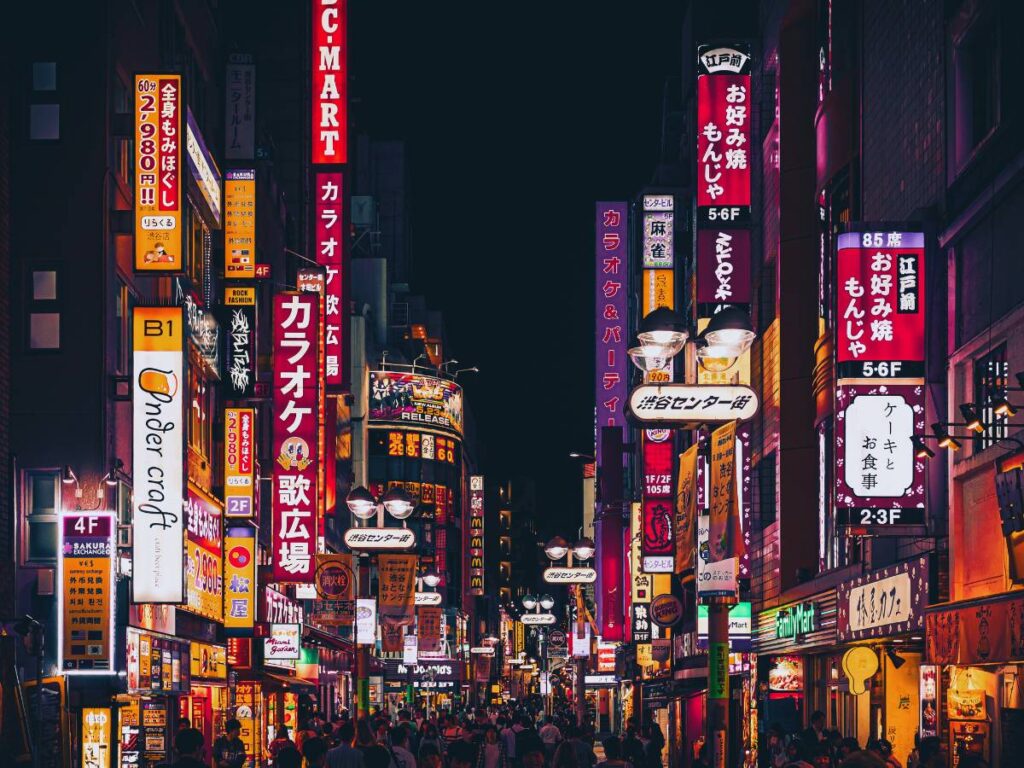
In most countries, you look left and right to spot a shop or restaurant. In Japan? Look up. Loads of businesses are tucked away on upper floors of regular-looking buildings — especially in the cities. That hidden gem ramen shop? Could be on the 5th floor. That cute cafe you can’t find? Probably up a narrow staircase with a tiny sign you walked right past.
It feels weird at first, but once you get the hang of it, it’s kind of exciting — like discovering a secret layer to the city. You can often check the floor location on Google Maps before heading out; many listings include something like “3F” or “B1” (basement level) right in the name or address.
Also, keep an eye on building directories and elevator signs — they’ll usually list what’s on each floor. So don’t judge a building by its ground floor… the best stuff may be often hiding several storeys up.
14. Hotel Laundry Can Be Limited

If you’re planning to pack light and wash clothes on the go, here’s the heads-up: not all hotels in Japan offer laundry facilities. Budget hotels and business hotels often have coin laundry machines, but mid-range or boutique hotels might not — and some ryokan-style places definitely won’t.
Plan ahead by checking hotel listings, or scope out nearby coin laundries (coin randorii) on Google Maps before you arrive. They’re clean, efficient, and usually open late — plus some even have English instructions and free Wi-Fi while you wait. Worst case, pop into a konbini for snacks and make laundry night a little adventure.
15. Overtourism in Popular Spots
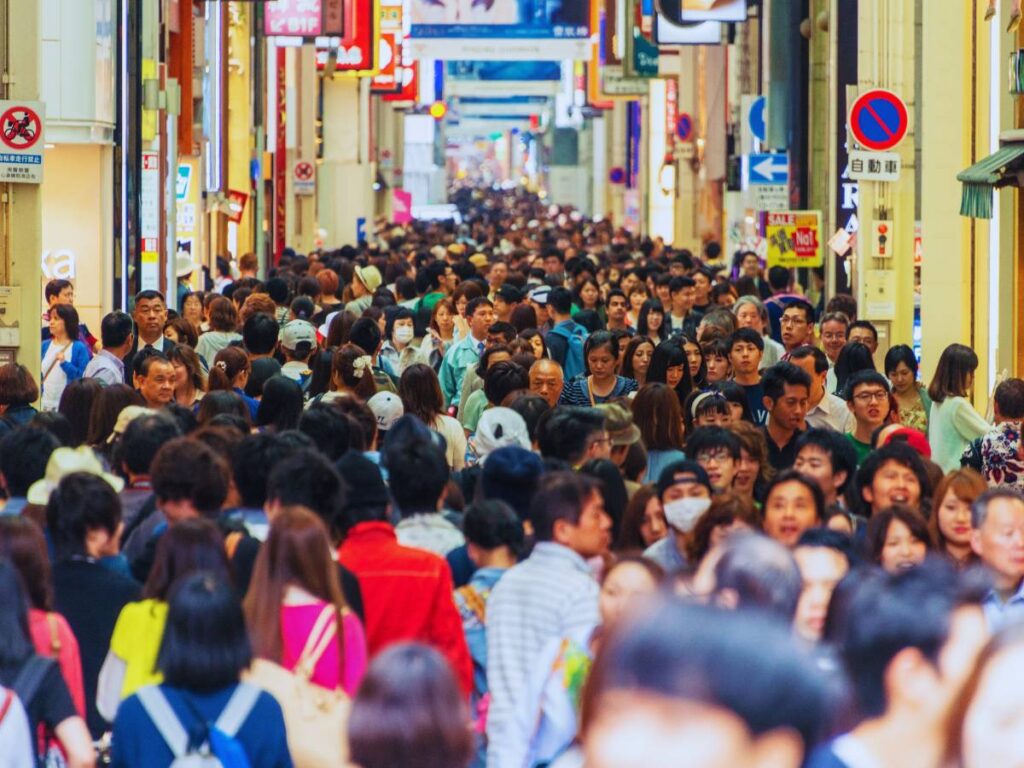
Japan has no shortage of bucket-list destinations — the kinds of places you’ve seen a hundred times on Instagram, in movies, or on travel blogs. But when it comes time to visit them in real life, many travellers are shocked by how crowded they can be. What looks like a serene shrine in the photos often turns out to be packed with tour groups, selfie sticks, and queues just to snap a picture.
Kyoto is one of the most impacted cities. Areas like Gion, Fushimi Inari Shrine, and the Arashiyama Bamboo Grove get incredibly congested, especially during spring and autumn. Gion, in particular, has struggled with disrespectful tourist behaviour — from people chasing geisha for photos to blocking alleyways and even entering private property. In response, some local streets have put up signs banning photography altogether.
Other spots that get hit hard by overtourism include Ninenzaka and Sannenzaka (the historic shopping streets near Kiyomizu-dera), Osaka Castle, Dotonbori, and teamLab Planets in Tokyo. Even more rural spots like Shirakawa-go and Mount Fuji’s 5th Station aren’t immune, with busloads of tourists arriving daily during peak seasons. Some areas have had to implement crowd control measures or ask tourists to avoid certain times of day.
So if you’re planning to visit these places, the best move is to go early — like, right after opening — or later in the evening. Avoid weekends and holidays if you can, and always be aware that these aren’t just tourist sites — they’re real places with people living and working in them. Being respectful, keeping noise down, and not blocking paths or entrances for photos goes a long way.
16. Personal Hygiene Products Are Different

Shopping for deodorant or tampons in Japan? You might be in for a bit of a surprise. Many common products — especially Western brands — just aren’t available here, and the local options can be very different in texture, scent, and strength. For example, Japanese deodorants tend to be milder and less long-lasting than what some travellers are used to, and spray types are more common than roll-ons or sticks.
Period products also vary — tampons often don’t come with applicators, and the range is more limited. Skincare, while high quality, leans heavily into brightening or whitening effects, which might not be ideal for everyone.
If you’re particular about your personal care routine or have sensitive skin, it’s worth bringing a good supply of your favourite essentials. Pharmacies can be overwhelming without English labels, and trial-and-error isn’t something you want to deal with mid-trip.
17. Punctuality Is a Big Deal (Seriously)
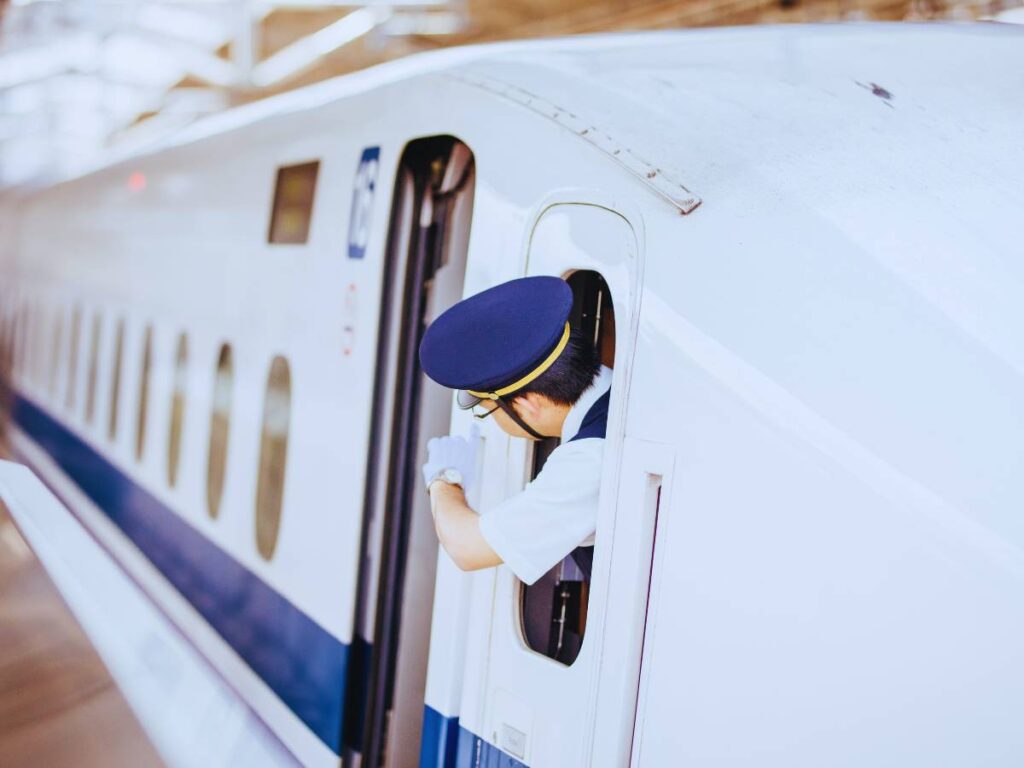
Japan doesn’t mess around when it comes to time. Being on time actually means being a bit early — especially for meetups, bookings, and anything remotely formal. Turning up exactly on the dot is considered borderline late, and even casual plans with friends usually come with that built-in “5 minutes early” expectation.
And when it comes to transport? Same vibe, but with military precision. Trains, especially the shinkansen (bullet train), depart to the second. If it says 14:03, it’s gone by 14:03. Don’t expect delays, don’t expect grace periods. Be on the platform early and ready to move — because that train won’t wait, even if you’re sprinting down the stairs.
18. Packaging Overload Is Real

Japan loves packaging — and they’re incredibly good at it. Snacks come in beautifully designed wrappers, gifts are often wrapped with origami-level precision, and even a piece of fruit can feel like a luxury item in its own individual box. Everything looks super polished, is often thoughtfully portioned, and packaging is usually easy to open, resealable, or split into smaller packs — which is honestly pretty convenient when you’re on the go.
The downside? It can feel excessive fast. A single cookie might come individually wrapped inside a plastic tray, then sealed in a bag, then placed in a box. You might finish a snack and end up with three layers of packaging to throw away. It’s especially noticeable when you buy souvenirs or shop at konbini — you walk away with more plastic than product.
The fix? Bring a reusable tote or eco bag — they’re not only better for the environment, but also practical since plastic bags cost extra or aren’t always offered. And if you’re shopping for gifts, feel free to politely decline extra wrapping unless you really want the full display. It’s all beautiful, but not always necessary.
19. Train Stations Can Be Labyrinths
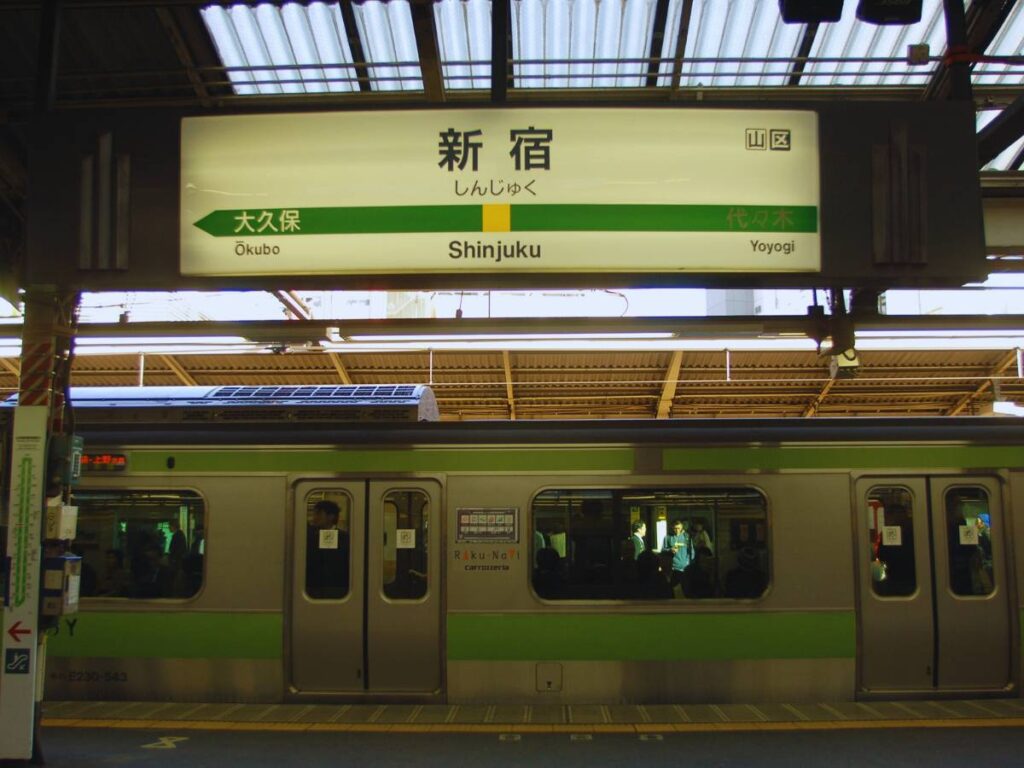
Big city stations in Japan aren’t just places to catch a train — they’re like self-contained cities. Places like Shinjuku, Tokyo, Umeda, or Ikebukuro are enormous, with dozens of exits, multiple train lines, underground malls, restaurants, and even hotels packed in. You could walk for 15 minutes underground and still be “in” the station.
When meeting someone or trying to find a specific exit, don’t just say the station name. Use exact exit numbers (like Exit B12 or East Exit), or tell your driver/shop/guide which line or platform you’re arriving at. Also, plan buffer time. You might arrive at the station on time — but still be 10 minutes away from where you actually need to be.
20. Don’t Expect Public Wi-Fi Everywhere

You’d think Japan, with all its futuristic tech, would be blanketed in free Wi-Fi. It’s not. While you can find public networks in places like airports, convenience stores, and major train stations, the connection is often slow, unreliable, or requires awkward sign-up processes — sometimes only in Japanese.
Hotels and Airbnbs may offer Wi-Fi, but it’s not guaranteed to be fast or stable, especially in rural areas. If you need solid internet access for maps, bookings, or translation apps (which you definitely will), rent a pocket Wi-Fi or grab a local SIM card at the airport. It’ll save you a lot of stress when you’re trying to find that hidden izakaya down a side street with no English signs.
21. Rubbish Sorting Can Catch You Off Guard

Even as a tourist, you’ll run into Japan’s super detailed waste separation system. Most public bins — like the ones near vending machines or in konbinis — have separate slots for bottles, cans, and general rubbish, and you’re expected to follow the rules, even if you’re just tossing a drink bottle.
Hotel rooms and Airbnb bins might also be split into categories like burnables, plastics, and recyclables, with labels (sometimes in Japanese only). It’s not always clear what goes where, so when in doubt, check signs or ask.
If you’re staying longer, your host will likely give you a full breakdown — and yes, people do care if you mess it up. For short stays though, just take a second look before tossing stuff, and don’t mix up your plastics and paper.
22. Slurping Is Totally Normal (and Encouraged)
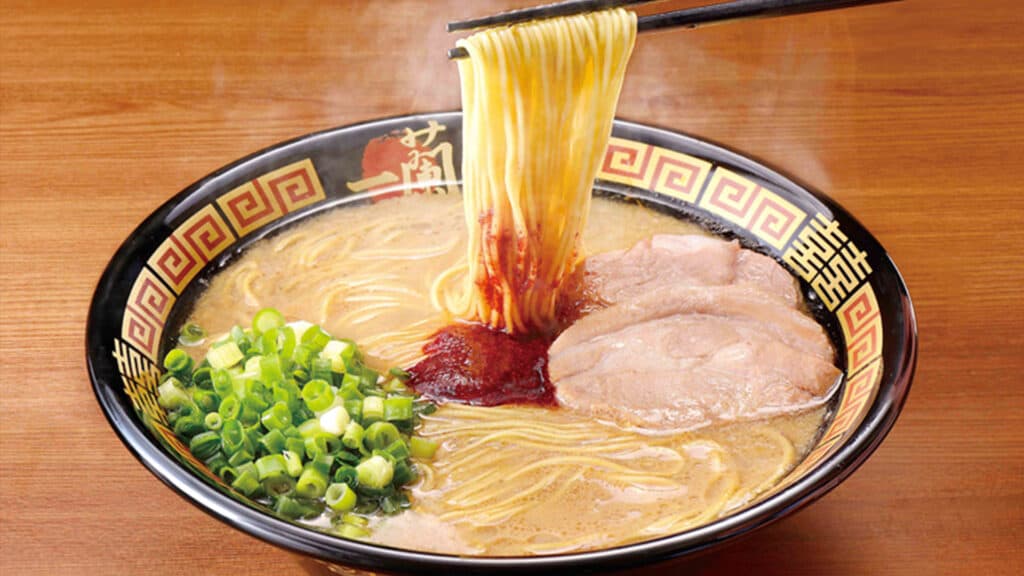
In most countries, slurping your food would get you side-eyes. In Japan? It’s a good thing — especially when it comes to noodles like ramen, soba, or udon. Loud slurping signals that you’re enjoying your meal, and it’s totally normal to hear a whole restaurant doing it.
It’s also practical. Slurping helps cool hot noodles as you eat, and for brothy dishes like ramen, it enhances the flavour experience (or so noodle-lovers say!). So don’t hold back — lean in, make some noise, and enjoy it like a local.
23. Chopstick Rules Are a Big Deal

Using chopsticks in Japan comes with its own set of cultural rules, and they go beyond just knowing how to hold them. Certain actions are considered quite serious faux pas, especially because they mimic rituals associated with funerals. One of the biggest things to avoid is sticking your chopsticks upright into a bowl of rice — this is done at funerals as an offering to the dead, so doing it at the table is seen as extremely inappropriate and bad luck.
Another big no-no is passing food directly from one pair of chopsticks to another, as this too reflects a funeral practice involving cremated bones. Even if you’re just trying to be helpful at a shared meal, avoid this completely.
Other habits that are considered poor manners include pointing with your chopsticks, waving them around while talking, stabbing food to pick it up, or resting them across your bowl when you’re finished eating — instead, use a chopstick rest if one is provided, or place them neatly on the tray.
If you’re sharing dishes, the polite move is to use the opposite (non-eating) end of your chopsticks when taking food from shared plates. These might seem like small things, but they make a big difference in showing respect for Japanese dining culture — and once you’re aware, they’re easy to follow.
24. Vending Machines Sell Wild Stuff (But Mostly Drinks)
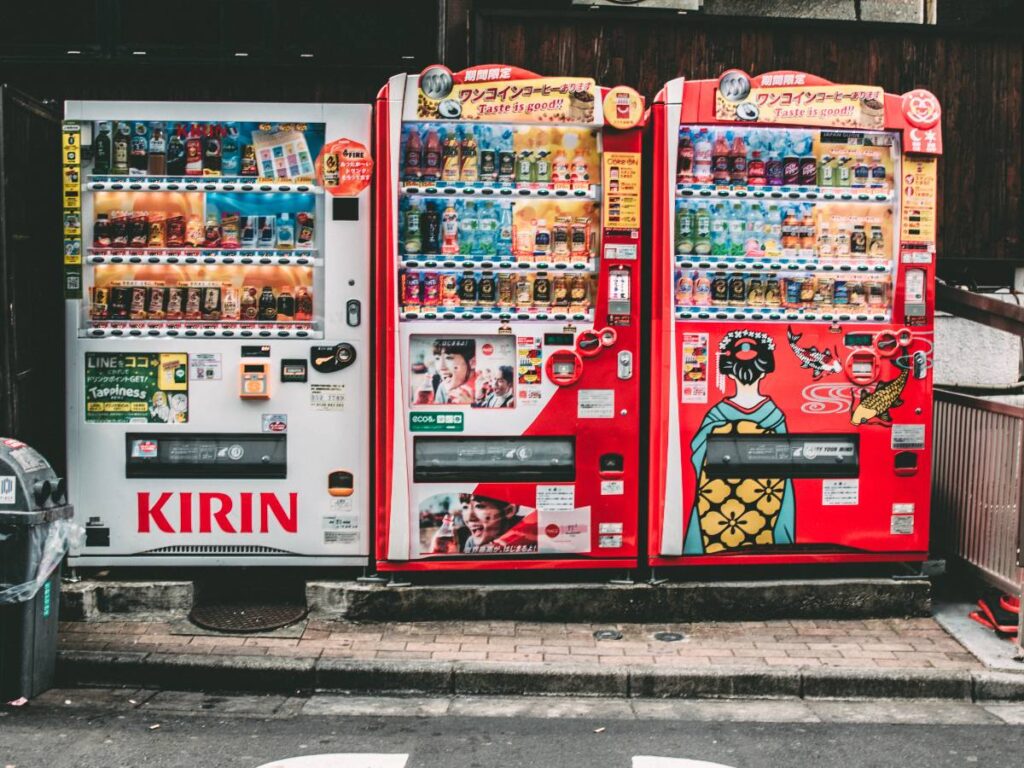
Japan’s vending machines are pretty legendary — and for good reason. You’ll spot them everywhere: along quiet residential streets, at train stations, inside buildings, and even down random alleyways. They’re brightly lit, super convenient, and often cheaper than buying from a shop.
Most commonly, they sell drinks — everything from iced coffee, green tea, and soft drinks to seasonal limited-edition sodas. Many also offer hot drinks in winter, and yes, they come out actually warm.
Beyond that, you’ll sometimes find machines selling snacks, umbrellas, batteries, face masks, and even ice cream. The more “out there” stuff — like cold ramen, soup in a can, toys, neckties, or underwear — does exist, but it’s rare and usually placed in novelty spots or for tourist appeal. You won’t stumble on them everywhere, but they’re fun to hunt down if you’re curious.
Most machines accept coins, bills, and IC cards like Suica or Pasmo, so they’re super easy to use. Whether you’re thirsty, craving a snack, or suddenly caught in the rain without an umbrella — there’s probably a vending machine nearby that’s got your back.
25. Lost Something? It’ll Likely Come Back
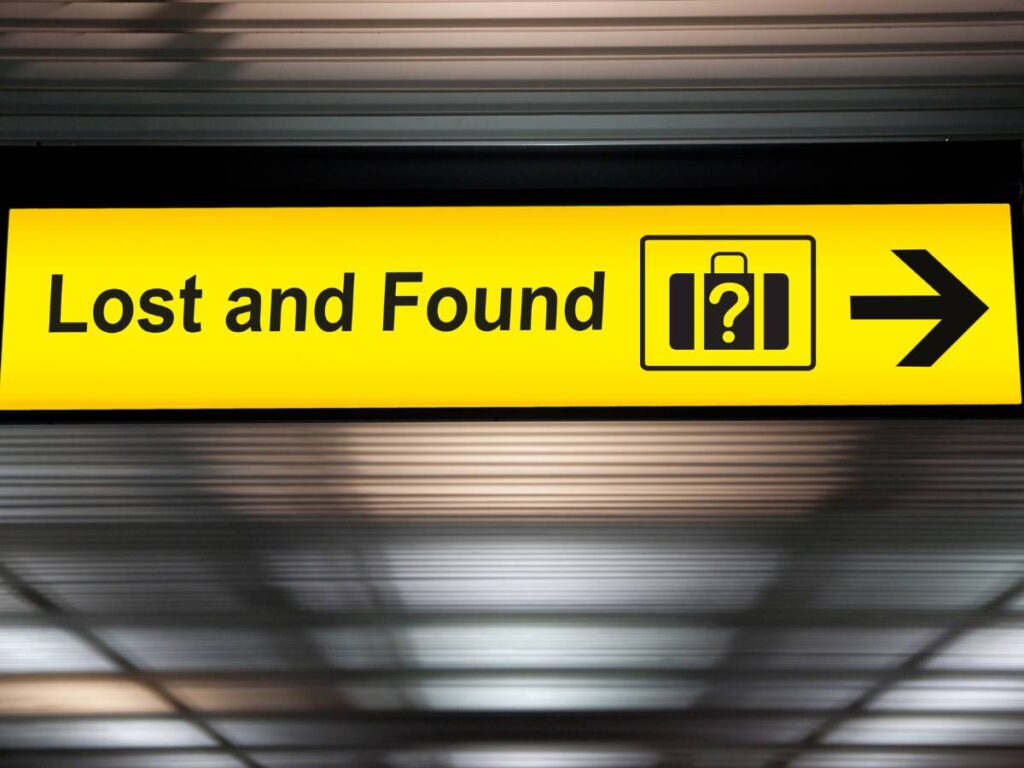
Japan has one of the most impressive lost-and-found cultures in the world. Lose your phone, wallet, passport, camera, or even something as minor as an umbrella — and there’s a genuinely high chance you’ll get it back. People here don’t just leave lost items alone — they often go out of their way to hand them in to the nearest station office, store counter, or kōban (police box).
If you’ve lost something, the first thing to do is retrace your steps. In many cases, your item might still be exactly where you left it — untouched. If it’s not there, ask the staff nearby or head to the nearest koban.
Be ready to describe what you lost, when, and where. Police officers will often take a written report and may even contact you later if the item turns up. Train stations have their own centralised lost and found system, especially JR stations, and items are sometimes transferred between branches based on where they were found.
This kind of honesty really surprises a lot of visitors. Locals grow up with a strong sense of not taking what isn’t theirs — even small amounts of money are routinely handed in. It’s one of those quiet, deeply ingrained cultural traits that really sticks with you after visiting. In a world where “lost” often means “gone forever,” Japan gives you a rare and reassuring dose of hope.
26. Crazy Clean & Super Safe

Japan is next-level clean — like, spotless. You’ll honestly wonder how the streets stay so immaculate when there are barely any public bins around. People just carry their rubbish with them until they can throw it away properly. There’s a strong cultural respect for shared spaces, so littering is basically a no-go.
Even super busy areas like Shibuya or Osaka’s Dotonbori somehow stay tidy, and public transport is just as neat — trains are cleaned constantly, and even the toilets in stations are shockingly decent.
It’s also one of the safest places you’ll probably ever visit. Walking alone at night, even in sketchy-looking backstreets, feels totally fine — no weird vibes, no lurking dodgy types. Violent crime is super rare, and petty theft isn’t really a thing.
People regularly leave their bags to claim a table or fall asleep on the train with their phones out, and no one bats an eye. That said, it’s always smart to stay aware, but overall, Japan sets a ridiculously high bar for both cleanliness and personal safety.
27. Next-Level Hospitality

People in Japan don’t mess around when it comes to being helpful — the level of kindness and effort is honestly unreal. Staff in shops, restaurants, hotels, you name it, are super polite and go way beyond just “doing their job”. And it’s not in a fake customer service way either — it feels super genuine. There’s no tipping culture, but you’ll still get treated like royalty, even if you’re just grabbing a snack from the local konbini.
That said, locals are usually pretty shy, so they might not rush over to help unless you ask — but if you do, they’ll often go above and beyond. People have walked us to our train platform, helped translate full conversations on their phones, and even called ahead to check info for us. Just don’t be afraid to approach someone if you’re stuck. You’ll nearly always be met with patience and a big effort to help.
28. 24/7 Everything (Almost)

Big cities like Tokyo and Osaka basically run on a “sleep is optional” vibe. You’ll never really feel stuck for options, no matter what time it is.
Convenience stores — aka konbinis — are open 24/7 and are absolute lifesavers. They’ve got hot meals, drinks (yep, even alcohol), fresh socks, phone chargers, skincare, ATMs, and sometimes even concert tickets or printing services. Legit feels like you could live out of one if you had to.
But it doesn’t stop there — karaoke joints, internet cafes, manga cafes, and capsule hotels are also open all night. A lot of them even offer overnight packages if you miss the last train and need somewhere to chill, nap, or belt out some late-night power ballads.
You’ll find 24-hour ramen spots, gyudon chains like Sukiya or Matsuya, and random vending machines selling everything from hot drinks to ice cream. It’s super handy if you’re jet-lagged or just not ready to call it a night.
Just keep in mind that once you’re out of the big city bubble, the 24/7 lifestyle fades fast — so it’s worth double-checking what’s open if you’re off exploring smaller towns.
Ready to Be Shocked (in the Best Way?)

Japan has a habit of catching you off guard — from vending machines that come to the rescue at 2am to unexpectedly spotless toilets in the middle of nowhere. You might think you’ve done all your research, but once you’re here, something small will almost definitely make you pause and go, “Wait… what?” And honestly, that’s part of the fun.
These little surprises are what make travelling in Japan feel so different — and so memorable. We’ve shared the ones our guests talk about the most, but we know there are plenty more. If something totally unexpected happened on your trip, or you found your own “Japan shock,” we want to hear about it. In Japan, there’s always another surprise waiting around the corner.



